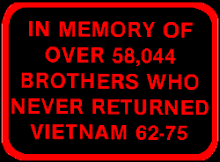Kilroy was here is an American popular culture expression, often seen in graffiti. Its origins are open to speculation, but recognition of it and the distinctive doodle of "Kilroy" peeking over a wall is known almost everywhere among U.S. residents who lived during World War II and through the Korean War.
Similar doodles also appear in other cultures. In an Australian variant, the character peeping over the wall is not named Kilroy but Foo, as in "Foo was here". In the United Kingdom, such graffiti is known as a "chad". In Chile, the graphic is known as a "sapo" (slang for nosy); this might refer to the character's peeping, an activity associated with frogs because of their protruding eyes. In Mexico it is known as "El Fisgon". A very similar figure is "Tosun" in Turkey. Tosun is both a less used male name and also refers to a bullock. It is used as "Bunu yazan Tosun" ("Tosun wrote this"). In Poland Kilroy is replaced with "Józef Tkaczuk", an elementary school janitor (as an urban legend says). Graffiti writings have the form of sentences like "Gdzie jest Józef Tkaczuk?" ("Where is Joseph Tkatchuk?") and "Tu byłem - Józef Tkaczuk" ("I was here - Joseph Thatchuk"). It has appeared in movies as well—at the end of the World War II war comedy Kell's Heroes, Kelly and his men leave the doodle in a bank they've just robbed, along with the words, "UP YOURS, BABY". It appears in the 1970 film Patton on the side of a tank.
Origins
The phrase appears to have originated through United States servicemen, who would draw the doodle and the text "Kilroy Was Here" on the walls or elsewhere they were stationed, encamped, or visited.
One theory identifies James J. Kilroy (1902–1962), an American shipyard inspector, as the man behind the signature. During World War II he worked at the Fore River Shipyard in Quincy, Mass., where he claimed to have used the phrase to mark rivets he had checked. The builders, whose rivets J. J. Kilroy was counting, were paid depending on the number of rivets they put in. A riveter would make a chalk mark at the end of his or her shift to show where they had left off and the next riveter had started. Unscrupulous riveters discovered that, if they started work before the inspector arrived, they could receive extra pay by erasing the previous worker's chalk mark and chalking a mark farther back on the same seam, giving themselves credit for some of the previous riveter's work. J.J. Kilroy stopped this practice by writing "Kilroy was here" at the site of each chalk mark. At the time, ships were being sent out before they had been painted, so when sealed areas were opened for maintenance, soldiers found an unexplained name scrawled. Thousands of servicemen may have potentially seen his slogan on the outgoing ships and Kilroy's omnipresence and inscrutability sparked the legend. Afterwards, servicemen could have begun placing the slogan on different places and especially in new captured areas or landings. At some later point, the graffito (Chad) and slogan (Kilroy was here) must have merged.
The New York Times indicated this as the origin in 1946, based on the results of a contest conducted by the American Transit Association to establish the origin of the phenomenon. The article noted that Kilroy had marked the ships themselves as they were being built—so, at a later date, the phrase would be found chalked in places that no graffiti-artist could have reached (inside sealed hull spaces, for example), which then fed the mythical significance of the phrase—after all, if Kilroy could leave his mark there, who knew where else he could go?
Another possibility is that Kilroy was actually Richard Kilroy O'Malley, from Butte, Montana, author of "Mile High, Mile Deep" and an Associated Press correspondent during World War II who was subsequently posted in Berlin, Korea, Cyprus, Paris, North Africa and the Belgian Congo.
Kilroy was the most popular of his type in World War II, as well as today. Herbie (Canadian), Chad (British- World War II), and Mr. Foo (Australian- World War I & II) never reached the popularity Kilroy did. The ‘major’ Kilroy graffito fad ended in the 1950s, but today people all over the world still scribble ‘Kilroy was here’ in schools, trains, and other similar public areas.
Legends
There are many urban legends attached to the Kilroy graffiti. One states that Adolf Hitler believed that Kilroy was some kind of American super spy because the graffiti kept turning up in secure Nazi installations, presumably having been actually brought on captured Allied military equipment.
Another states that Stalin was the first to enter an outhouse especially built for the leaders at the Potsdam conference. Upon exiting, Stalin asked an aide: "Who is this Kilroy?" Another legend states that a German officer, having seen frequent "Kilroys" posted in different cities, told all of his men that if they happened to come across a "Kilroy" he wanted to question him personally.
The graffiti is supposedly located on various significant or difficult-to-reach places such as on the torch of the Statue of Liberty, on the Marco Polo Bridge in China, in huts in Polynesia, on a high girder on the George Washington Bridge in New York, at the peak of Mt. Everest, on the underside of the Arc de Triumphe, scribbled in the dust on the moon, in World War II pillboxed scattered around Germany, and around the sewers of Paris.
According to a History Channel's account, young men were hired in 1937 to help move the gold bars at fort Knox, KY. In one scene, when the narrator mentions that some of these workers left graffiti, the message "Kilroy was here" appears on a wall briefly but distinctly with the date 5/13/37.
Subscribe to:
Post Comments (Atom)

No comments:
Post a Comment